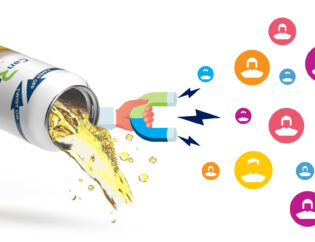
In an era where environmental concerns have taken center stage, the concept of sustainability has transformed from a buzzword into a global imperative. It’s no longer an option but an essential responsibility that extends to everyone—brands and consumers alike. Here, we explore the interconnected roles that both play in advancing sustainability for a better future.
Brands
Brands, especially those in the consumer packaged goods (CPG) industry, hold considerable power when it comes to sustainable practices. They dictate what products reach the market and how they are produced. By adopting eco-conscious manufacturing processes, sourcing materials responsibly, and reducing waste, brands can significantly lower their environmental footprint.
Sustainability in packaging design is a vital area where brands can make a significant impact. From using recyclable materials to reducing excess packaging, brands can lead the way in developing innovative solutions that prioritize sustainability without compromising product quality or safety.
Brands have a responsibility to communicate their sustainability efforts transparently. Sharing information about eco-friendly practices, supply chain ethics, and commitments to reducing carbon emissions builds trust with consumers. Transparent communication helps consumers make informed choices and supports brands that align with their values.
Consumers
Consumers play a pivotal role in promoting sustainability through their purchasing decisions. By opting for products with eco-friendly packaging and supporting brands with strong sustainability commitments, consumers send a clear message to the market that sustainability matters.
Reducing personal waste is another way consumers can contribute to sustainability. Practices like recycling, reusing, and reducing single-use plastics not only benefit the environment but also influence brands to adopt greener practices.
Consumers have the power to hold brands accountable for their sustainability claims. Through social media, reviews, and advocacy, consumers can demand transparency and results from brands, encouraging them to prioritize sustainability.
The journey towards sustainability is not one-sided; it’s a shared responsibility. Brands and consumers are interconnected in a sustainable ecosystem where each influences the other. When brands commit to sustainability, consumers respond with support and loyalty. Conversely, when consumers demand eco-conscious products and practices, brands respond with innovative solutions.
The intersection of these responsibilities is where real change happens. Brands and consumers working together can accelerate the transition to a more sustainable future. Sustainability is not the responsibility of just one party; it’s a shared commitment that, when embraced by all, has the potential to reshape industries and protect our planet for generations to come.
In conclusion, sustainability is a responsibility shared by both brands and consumers. By working together, they can create a world where products are produced with care for the environment, consumers make conscious choices, and the collective impact leads to a more sustainable and harmonious future. It’s a journey where everyone has a role to play and a stake in the outcome.










